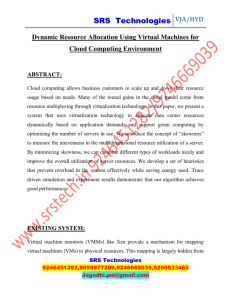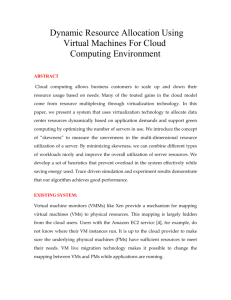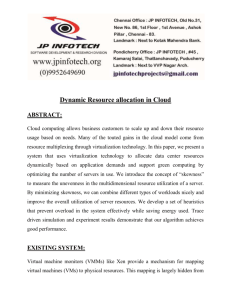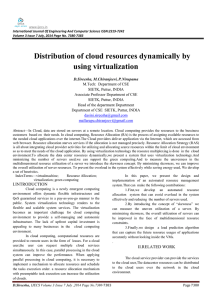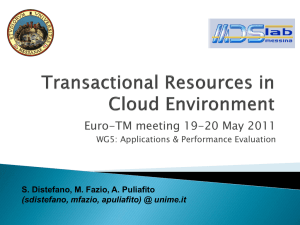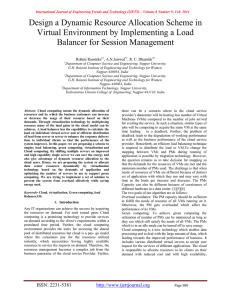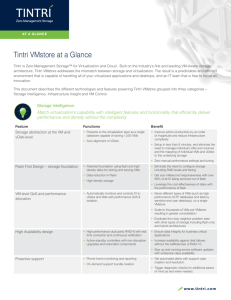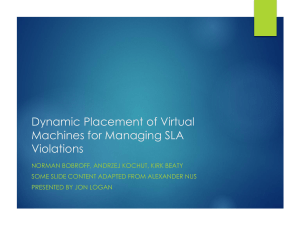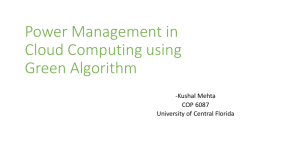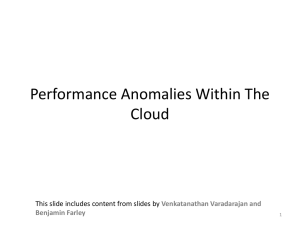Dynamic Resource Allocation Using Virtual Machines for Cloud
advertisement
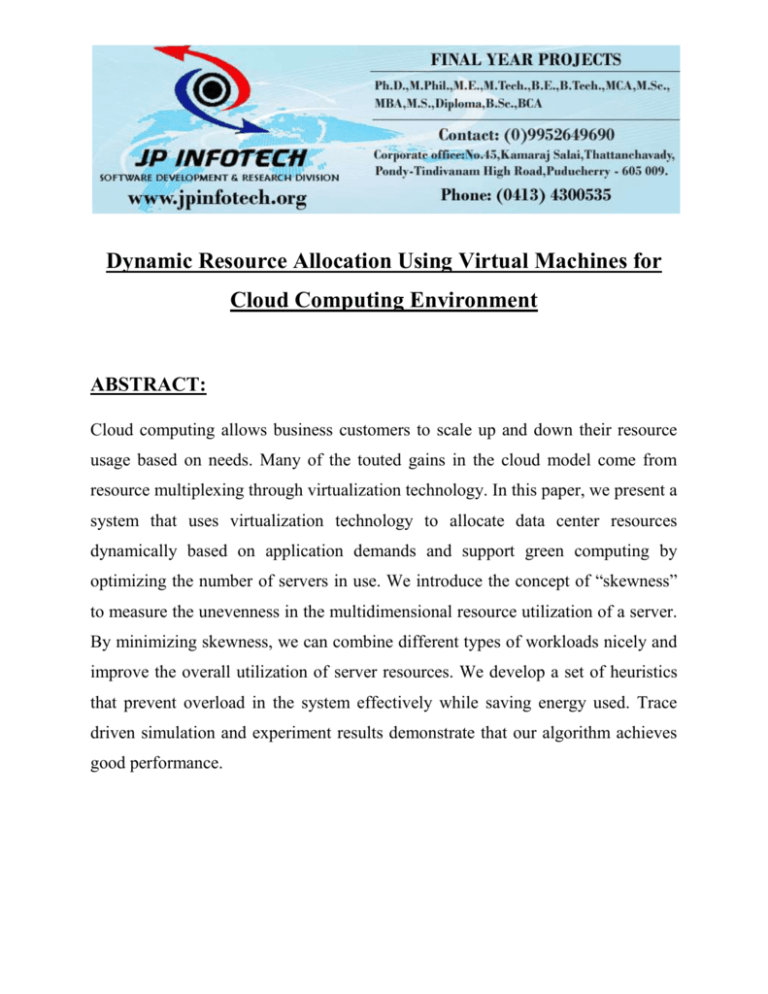
Dynamic Resource Allocation Using Virtual Machines for Cloud Computing Environment ABSTRACT: Cloud computing allows business customers to scale up and down their resource usage based on needs. Many of the touted gains in the cloud model come from resource multiplexing through virtualization technology. In this paper, we present a system that uses virtualization technology to allocate data center resources dynamically based on application demands and support green computing by optimizing the number of servers in use. We introduce the concept of “skewness” to measure the unevenness in the multidimensional resource utilization of a server. By minimizing skewness, we can combine different types of workloads nicely and improve the overall utilization of server resources. We develop a set of heuristics that prevent overload in the system effectively while saving energy used. Trace driven simulation and experiment results demonstrate that our algorithm achieves good performance. EXISTING SYSTEM: Virtual machine monitors (VMMs) like Xen provide a mechanism for mapping virtual machines (VMs) to physical resources. This mapping is largely hidden from the cloud users. Users with the Amazon EC2 service, for example, do not know where their VM instances run. It is up to the cloud provider to make sure the underlying physical machines (PMs) have sufficient resources to meet their needs. VM live migration technology makes it possible to change the mapping between VMs and PMs While applications are running. The capacity of PMs can also be heterogeneous because multiple generations of hardware coexist in a data center. DISADVANTAGES OF EXISTING SYSTEM: A policy issue remains as how to decide the mapping adaptively so that the resource demands of VMs are met while the number of PMs used is minimized. This is challenging when the resource needs of VMs are heterogeneous due to the diverse set of applications they run and vary with time as the workloads grow and shrink. The two main disadvantages are overload avoidance and green computing. PROPOSED SYSTEM: In this paper, we present the design and implementation of an automated resource management system that achieves a good balance between the two goals. Two goals are overload avoidance and green computing. 1. Overload avoidance: The capacity of a PM should be sufficient to satisfy the resource needs of all VMs running on it. Otherwise, the PM is overloaded and can lead to degraded performance of its VMs. 2. Green computing: The number of PMs used should be minimized as long as they can still satisfy the needs of all VMs. Idle PMs can be turned off to save energy. ADVANTAGES OF PROPOSED SYSTEM: We make the following contributions: We develop a resource allocation system that can avoid overload in the system effectively while minimizing the number of servers used. We introduce the concept of “skewness” to measure the uneven utilization of a server. By minimizing skewness, we can improve the overall utilization of servers in the face of multidimensional resource constraints. We design a load prediction algorithm that can capture the future resource usages of applications accurately without looking inside the VMs. The algorithm can capture the rising trend of resource usage patterns and help reduce the placement churn significantly. SYSTEM ARCHITECTURE: SYSTEM CONFIGURATION:HARDWARE CONFIGURATION:- Processor - Pentium –IV Speed - 1.1 Ghz RAM - 256 MB(min) Hard Disk - 20 GB Key Board - Standard Windows Keyboard Mouse - Two or Three Button Mouse Monitor - SVGA SOFTWARE CONFIGURATION:- Operating System : Windows XP Programming Language : JAVA Java Version : JDK 1.6 & above. REFERENCE: Zhen Xiao, Senior Member, IEEE, Weijia Song, and Qi Chen-“Dynamic Resource Allocation Using Virtual Machines for Cloud Computing Environment”- IEEE TRANSACTIONS ON PARALLEL AND DISTRIBUTED SYSTEMS, VOL. 24, NO. 6, JUNE 2013.
